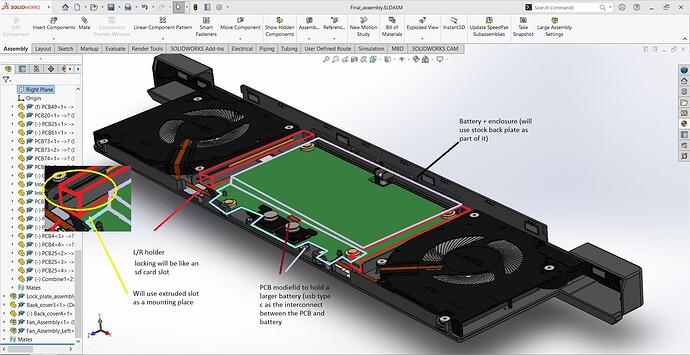It’s more the current levels, than Wh capacity. Lower voltage and higher Wattage (Power) gives higher Amp (Current). Which means you need to size up wiring, heat dissipation, etc.
60W@3.7v nominal (single cell LiPo) would be about 16.2a of current. 4 cell series is 14.8v, 60W gives about 4a of current. A LOOOOOT easier to handle.
Something like Protection Circuit Module (PCB) for 14.8V Li-Ion Battery Pack (10A limit) with Fuel Gauge Socket would be a fine BMS for this, able to handle up to 10a in/out continuous. I’d limit to 6 or 7 max just be safe of course.
And for max capacity, I’d use pouch cells, since they’re square-ish, so less void space.
If you’re physically removing it as well to “hot swap”, you need to also have some kind of protection container around it, so that cuts slightly into the volume as well. Plus you actually need an hot swap insert plug connector to hook up to the interposer to hot swap the battery in and out.
If you’re not hot swapping the battery in, that does simplify it. And yes, if the total size of the expansion card is enlarged a bit you can get a bit more space just fine, and not worry about protective case and insertable connector.
No, as @Blacksmith12 said, the challenge will be the interposer & logic circuit to handle the power out, and power in (charging from the laptop when plugged into the wall). In looking around for some other use case, I found BQ25713 data sheet, product information and support | TI.com which actually looks perfect for this, as it supports talking about the USB-PD stuff, talks I2C for a controlling MCU (probably some small Atmega or M0 or something, could be running Arduino perhaps?). Still not simple or easy.
![]()

